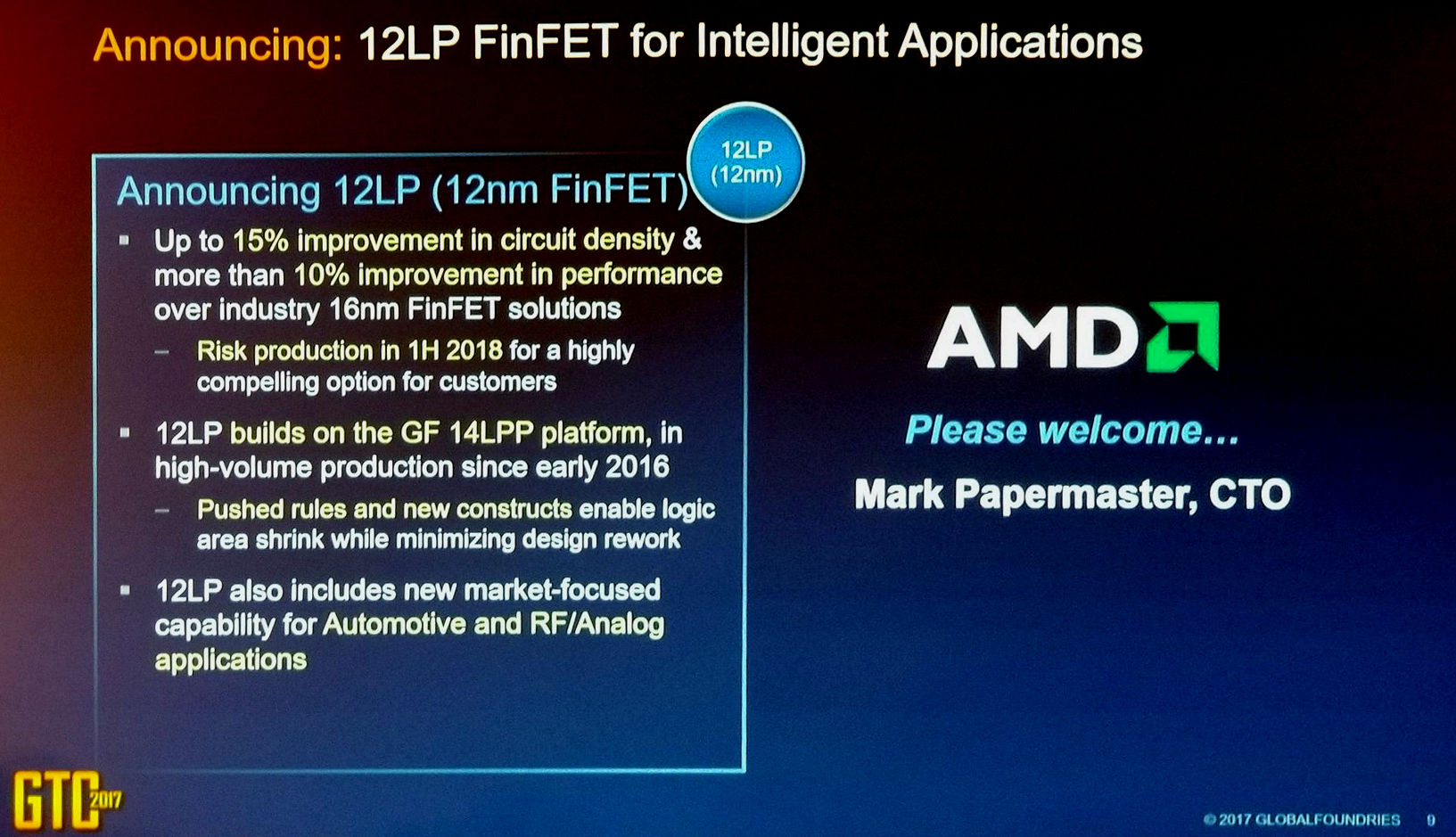goldstone77
Distinguished
GLOBALFOUNDRIES is Hitting on all Cylinders
by Scotten Jones
Published on 09-29-2017 03:00 PM

by Scotten Jones
Published on 09-29-2017 03:00 PM
12LP (leading performance) is a mid-life kicker for 14nm and offers 15% greater density and 10% better performance. 12LP is designed to be competitive with other 12nm foundry processes (TSMC recently announced a 12nm process and Samsung announced an 11nm process). Production is due to start in Q1-2018.
7LP (Leading performance) is GF's leading edge 7nm FinFET process. Whereas GF licensed Samsung's FinFET process at 14nm, at 7nm GF is developing their own process. Device performance at 7nm is >40% better than at 14nm and total power is >60% lower than 14nm. 7nm will provide 17 million gates/mm2 and a 30% die cost reduction versus 14nm with a >45% cost reduction for target segments. The PDK is available now and risk production is on track for the first half of 2018.



 .. we know that core per core Kabby and Coffe are the same......Kaby and Coffee Lake share the same microarchitecture, with Coffee Lake being effectively (ahem) caffeinated with a slightly refined manufacturing process (14nm++) over Kaby Lake (14nm+), as well as more cores and threads across the board, a different allocation of cache resources, and a few new overclocking knobs and levers. Learn more here:
.. we know that core per core Kabby and Coffe are the same......Kaby and Coffee Lake share the same microarchitecture, with Coffee Lake being effectively (ahem) caffeinated with a slightly refined manufacturing process (14nm++) over Kaby Lake (14nm+), as well as more cores and threads across the board, a different allocation of cache resources, and a few new overclocking knobs and levers. Learn more here:

